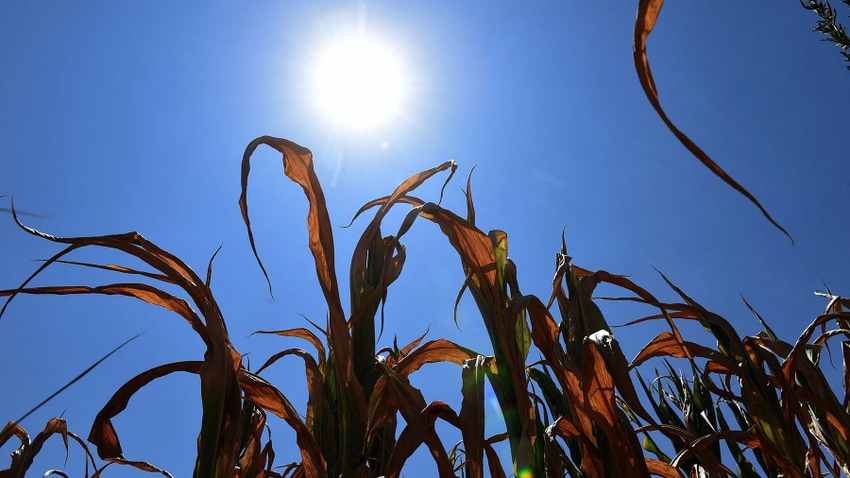
Few of us were able to escape the furnace-like temperatures that enveloped much of the U.S. grain belt this week. Triple digit temperatures made it nearly unbearable to mark off 35 paces in the corn field for yield checks.
Most chatter surrounding temperature impacts on yield suggests that it would have a limited effect on corn production at this point, but I would respectfully disagree. I recognize that ear size is complete, but we are not selling ears of corn – we are selling weight. Weight is getting sucked out of these ears in this extreme heat. It isn’t just the 100-degree temperatures in the shade, it is the 82-degree low at night that does not give the corn enough of a chance to recover.
Every kernel matters
I have been taught that just a 5-milligram difference per kernel, which seems next to nothing, amounts to as much as 50 bushels per acre. I have seen first-hand what losing 5 milligrams per kernel looks like.
My farm in Northwest Iowa has been very dry the last several years, relying heavily on subsoil moisture to get the crop through harvest. There were a lot of farms with 220 bpa APH that yielded 170 bpa. It has almost seemed that the month of August repelled rain, forcing the crop to speed up maturation and limp towards the finish line.
I can already see this season that farms with lighter soil or low soil moisture are going through the same thing right now. An extended growing season always seemed to pack the weight into those kernels versus having the crop cycle end abruptly due to heat.
September WASDE
While the Pro Farmer crop tour gives us a snapshot of the growing season at one specific moment in time, it may already be outdated by next week. This is not a critique of the tour, but rather an observation that the growing conditions are changing so quickly due to weather that they will soon be obsolete. The USDA has yet to take their September crop surveys for next month’s World Agricultural Supply and Demand Estimates report, so the data will be more up-to-date than the tour.
We saw crop conditions begin to flatline going into this week. I look towards the upcoming USDA crop progress update on Monday to highlight additional deterioration.
More dry heat on the way
Weather forecasts beyond seven days are not always that reliable, but they continue to show a drier trend forming with warmer temperatures lingering into mid-September. This could put additional weather premium into the soybean market.
It is also becoming quite clear that crop performance is going to be extremely spotty. This has been confirmed by our own crop tours in states like Kansas, Missouri and Nebraska that typically get less publicity.
As this plays out, I don’t expect final yield numbers to be all that different than last season. What we don’t know is what tricks USDA has up its sleeve to offset lower production numbers. Trimming off another 200 million bushels to a 2.2 billion bushel carryover helps, but doesn’t do a whole lot of good.
Some private analysts have voiced concerns that FSA acreage data for Iowa and Illinois imply that additional acreage adjustments are forthcoming. Soybeans continue to be the shining star, but the planting window is quickly approaching in Brazil where we continue to forecast an increase in acres for their next crop.
Matthew Kruse is president of Commstock Investments. Subscribe to their report at www.commstock.com.
Futures trading involves risk. The risk of loss in trading futures and/or options is substantial and each investor and/or trader must consider whether this is a suitable investment. Past performance is not indicative of future results.
Trading advice is based on information taken from trades and statistical services and other sources that CommStock Investments believes to be reliable. We do not guarantee that such information is accurate or complete and it should not be relied upon as such. Trading advice reflects our good faith judgment at a specific time and is subject to change without notice.
There is no guarantee that the advice we give will result in profitable trades.
The views and opinions expressed in this newsletter are those of the author and do not reflect those of R.J. O'Brien & Associates LLC. This report may contain political opinions as well as market opinions and commentary. Any content provided by Commstock Investments or authors are of their opinion and are not intended to malign any religion, ethnic group, club, organization, company, individual or anyone or anything.
Read more about:
WeatherAbout the Author(s)
You May Also Like






